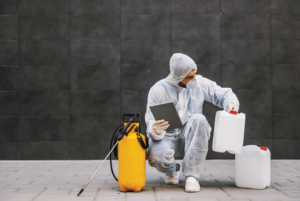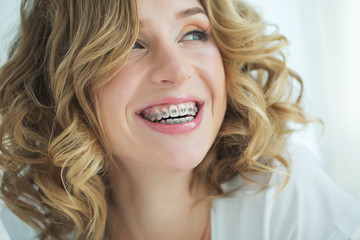Exterminators use various methods to control pest infestations, including chemical treatments, traps, and baits. They also provide advice on how to prevent future infestations.
Exterminators must be able to work with people who are stressed out by pests. They may also need to enter sewage systems and garbage disposal sites. Click here to Learn More.

When pests invade a home, they cause damage and inconvenience. In some cases, they also pose a threat to human health. For example, cockroaches can spread many diseases, including encephalitis and hepatitis, fleas can carry typhus and the plague, and mosquitoes can carry diseases like dengue fever, West Nile virus, Zika virus, and malaria.
A professional exterminator can help to remove pests and prevent them from re-infesting the property. They use various strategies, including traps, to control infestations. They can also help to create pest management plans for customers. These plans can include recommendations for landscape tactics, cleaning strategies, and other preventive measures.
The first step in an exterminator’s process is to thoroughly inspect the property. The exterminator will look for the most common entry points into the home, such as holes in walls and under doors. They will then use their expertise to find the most effective treatment. This is usually done using chemicals, but can also be accomplished with natural remedies.
After the initial inspection, the exterminator will sit down and discuss a detailed plan with the customer. They will explain what is being done and why, and go into as much detail as the customer would like. Once the customer has approved the plan, the exterminator will get to work.
During the treatment, the exterminator will make sure that all areas are treated. The area will be cleared of any items that can interfere with the treatment, such as toys, clothes and shoes. They will also inspect drains and garbage disposals for signs of cockroaches. During this time, the exterminator will use chemicals to eliminate the pests and prevent them from returning.
When a pest infestation occurs, it’s important to call an exterminator as soon as possible. This will ensure that the pests are eliminated before they have a chance to spread and affect your home’s value. Getting rid of pests quickly can save you money in the long run.
While extermination and pest control may seem similar, they have a few key differences. The main difference is that an exterminator’s goal is to destroy pests, while a pest control professional’s goal is to provide preventative solutions for pests.
Commercial
If you own a business, the last thing you want is a pest infestation. In addition to disrupting operations, they can cause health problems for employees and customers. The best way to protect your business is with the help of a trusted exterminator. Professional exterminators can create a custom commercial pest control plan that will eliminate pests and prevent them from returning.
Aside from the obvious benefits of pest elimination, commercial exterminators can also help businesses protect their reputations. Many business owners rely on a good public image to attract new clients, and a pest problem can ruin that. Some pests also carry diseases that can be transferred to humans, and a business owner will need to be proactive about eliminating the infestation and preventing future problems.
The duties of an exterminator include inspection and monitoring, chemical treatments, trapping and other removal methods. They may also advise customers on ways to prevent pests, such as by improving sanitation and sealing entry points into buildings. This can be a physically demanding job, as the exterminator must often stand or crouch for long periods of time, and must wear protective clothing such as gloves and goggles.
Some of the tools that an exterminator uses include pesticides, which can be highly toxic and require proper training to use. Others include mechanical devices such as ultrasonic sound waves that repel certain pests, insect growth regulators and pheromone traps. Some exterminators may also utilize natural or organic pest control techniques.
While these methods can be effective, they are not foolproof. A good exterminator will keep accurate records and will follow all safety regulations when working with pesticides. They will also be prepared to work with customers to decide on a treatment plan that is mutually beneficial.
As more and more people move to urban areas, demand for exterminators is increasing. The work can be challenging, but rewarding for those who are interested in protecting their property from unwanted pests. The best way to avoid pests is to keep them from getting into your home in the first place, but if that’s not possible, a reliable exterminator can help.
Industrial
There are a variety of pests that can infest industrial and warehouse spaces. These include insects such as cockroaches, bed bugs, and termites, as well as rodents like mice and rats. Exterminators who work in these environments may use chemical treatments, traps, or other methods to control the pests. They may also help clients prevent future infestations by advising them on sanitation practices or repairing structural problems.
Commercial businesses such as restaurants, hotels, and hospitals may also need the services of an exterminator. These professionals must be able to work in public areas and maintain a professional demeanor while dealing with customers. They may also be required to follow strict government regulations regarding the storage, transportation, and usage of chemicals.
When a business owner needs to hire an exterminator, they should look for someone who is licensed and has experience in the industry. They should also make sure that the company is bonded and insured. This will protect the client in the event that the exterminator damages property or injures a worker while performing service.
A licensed exterminator should be able to provide the following services:
Insect Extermination: Insects such as ants, bees, and wasps can cause a great deal of damage to residential and commercial buildings. Exterminators can remove these pests and their eggs using insecticides and other forms of pest control.
Rodent Extermination: Rats and mice are common pests in homes and offices, but they can also invade warehouses and other large spaces. These pests can damage equipment and products and create a health risk for employees. Exterminators can use baits, traps, or other methods to control these pests.
Wildlife Extermination: Some exterminators specialize in the control of nuisance wildlife such as raccoons, skunks, and possums. These specialists may use humane trapping techniques to capture these animals and relocate them.
Starting a new pest control business can be challenging, especially in a highly competitive landscape. However, if you have the right qualities and a solid reputation, you can succeed in this field. The key is to focus on quality and care with every customer interaction. This will ensure that you get repeat business and referrals from satisfied customers.
Warehouse
Warehouses are the perfect habitat for pests since they offer three things that these creatures need to survive: food, water and shelter. Because of this, these spaces are susceptible to infestations from rodents, flies, birds and more. If you spot any signs of pests in your warehouse, don’t hesitate to call a professional for help. A warehouse and logistics exterminator will help you eliminate pests and prevent future issues.
Pests in warehouses can damage your products and reputation. They can also cause a health-related problem for your employees and visitors. This is why it’s important to maintain a pest-free warehouse. You can do this by storing food products in sealed containers, using pest-proof trash cans, and securing the doors and windows. It’s also a good idea to clean the floors and empty the trash receptacles on a regular basis. You can also dust your warehouse with talcum powder to make it harder for pests to enter your premises.
A warehouse that specializes in building materials is particularly vulnerable to termite infestations. These insects can eat through wood and degrade the materials in your warehouse. They can also contaminate the raw products that are stored inside. To avoid a costly termite infestation, you should seek the assistance of a commercial pest control company.
A warehouse and logistics exterminator can help you create a safe environment for your employees and customers. They can inspect your warehouse for any signs of infestation, such as chew marks, droppings and musky odors. They can then implement a plan to eliminate these pests and keep them out for good. They can also recommend steps to prevent pests from entering your warehouse in the future, such as sealing the roof and windows.




